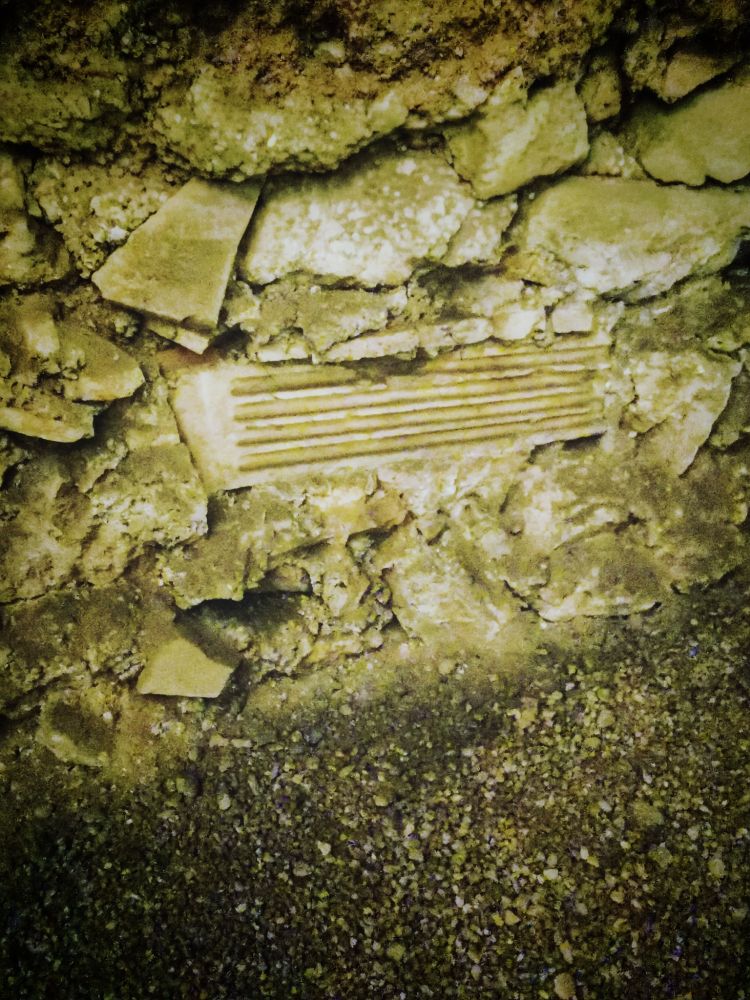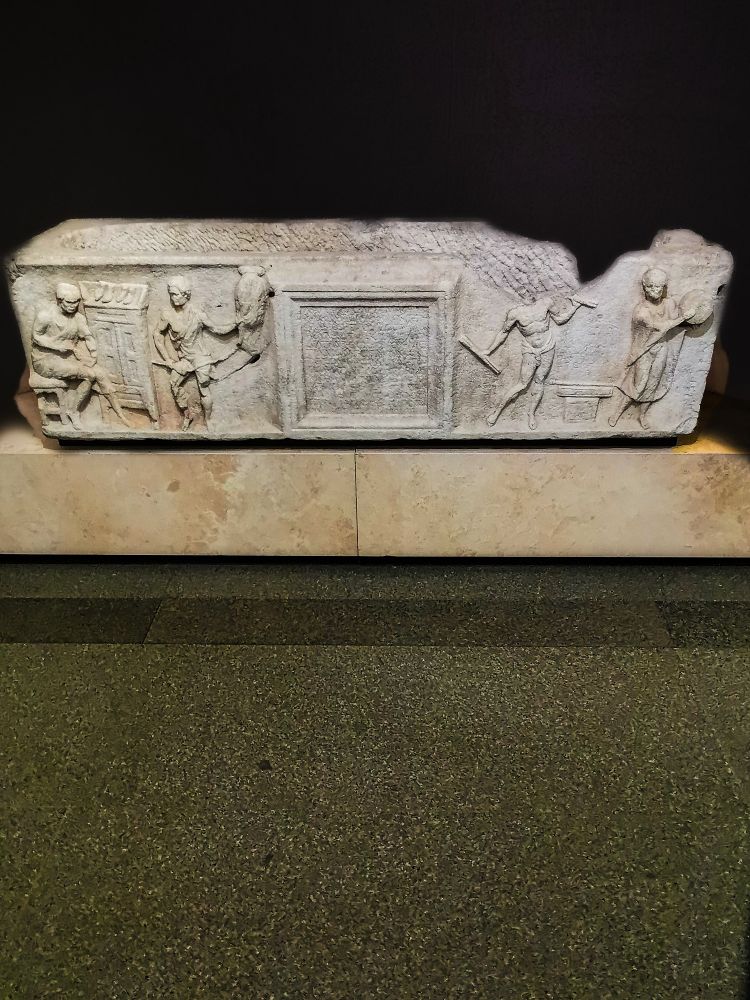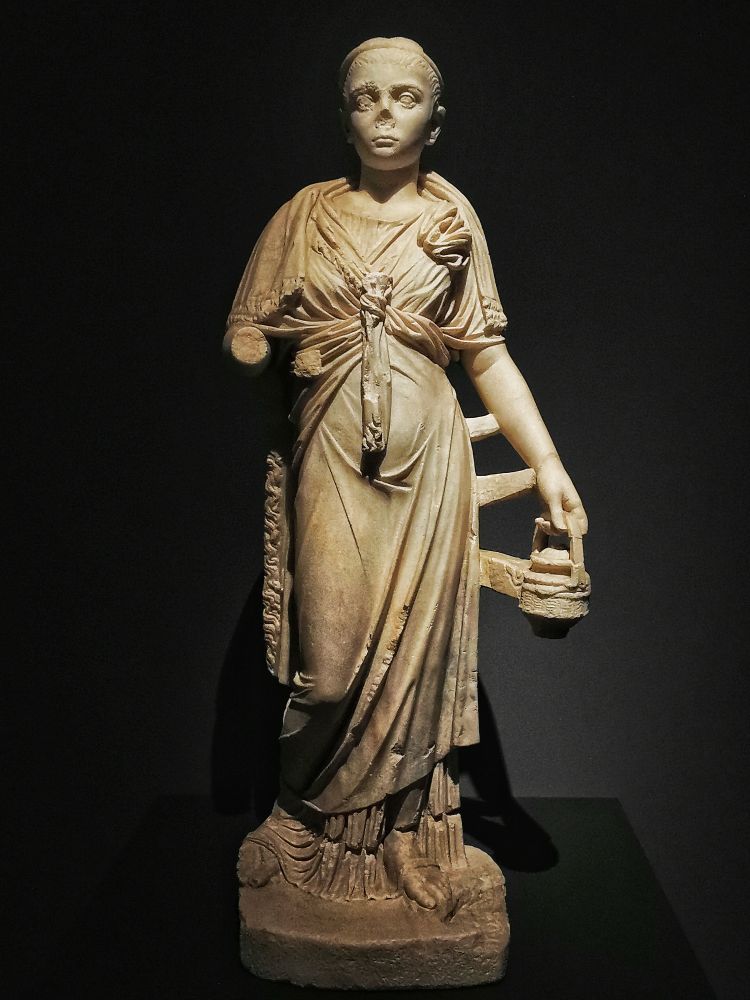
The ALT text reproduces the text written on the images I post.


![CIPPUS WITH INSCRIPTION, AFTER 6 CE. DRUGSTORE MUSEUM
COHORS VI PR(ÆTORIA) / MVNIT / PER P(EDES) ∞∞ [---]CLX[---?]
"The sixth Prætorian cohort made (this) for 2160 (Roman) feet". Damage to the third line makes other letters illegible. The numeration is not our familiar Roman numerals, but uses what we think of as the infinity symbol, ∞, in place of the more familiar M to indicate 1000. It's used twice here, so 2000. Then comes C, 1000, then the upside-down T which is an alternate for L, 50, and X, 10. Adding this up gives us a significant distance, 2160 feet or 640 metres, which probably refers to roadworks, or, less likely, hydraulic works, both of which fell into the purview of the Prætorians. The crumbly stone of the cippus is tufo lionato, or Monteverde tufo, distinguished by its yellow colour.](https://cdn.bsky.app/img/feed_thumbnail/plain/did:plc:y2ps7or6drwz3yuvelv6glai/bafkreicgddp7aofwcczf6dupvf6plw2ti7ltzstbbdrurss7jozcffq7pu@jpeg)






















Works just like the mobile app.
Install this app on your iPhone: tap the share button and then Add to Home Screen.
Tap the Share button
in Safari's toolbar
Select "Add to Home Screen"
from the menu
Tap "Add"
The app will appear on your home screen



![CIPPUS WITH INSCRIPTION, AFTER 6 CE. DRUGSTORE MUSEUM
COHORS VI PR(ÆTORIA) / MVNIT / PER P(EDES) ∞∞ [---]CLX[---?]
"The sixth Prætorian cohort made (this) for 2160 (Roman) feet". Damage to the third line makes other letters illegible. The numeration is not our familiar Roman numerals, but uses what we think of as the infinity symbol, ∞, in place of the more familiar M to indicate 1000. It's used twice here, so 2000. Then comes C, 1000, then the upside-down T which is an alternate for L, 50, and X, 10. Adding this up gives us a significant distance, 2160 feet or 640 metres, which probably refers to roadworks, or, less likely, hydraulic works, both of which fell into the purview of the Prætorians. The crumbly stone of the cippus is tufo lionato, or Monteverde tufo, distinguished by its yellow colour.](https://cdn.bsky.app/img/feed_thumbnail/plain/did:plc:y2ps7or6drwz3yuvelv6glai/bafkreicgddp7aofwcczf6dupvf6plw2ti7ltzstbbdrurss7jozcffq7pu@jpeg)
























Enter your Bluesky handle and app password to unlock posting, likes, and your Following feed.
Need an app password? Open Bluesky, go to Settings > App passwords, and create a new one.


Sign in with your Bluesky account to unlock posting, likes, and your Following feed.